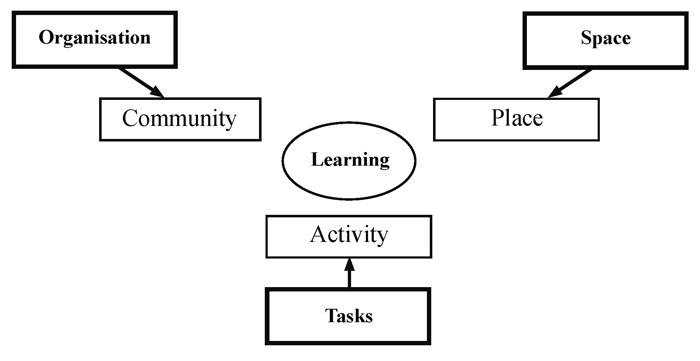Again, my personal notes for week 24
In our (Thorpe & Jones 2009) view, design is a social practice that implies a constant interaction between theoretical understanding and practical action. Far from practice being seen as distinct from and potentially opposed to theory, we see practical action as an outcome of some previous theoretical understanding, however much that previous theory might have become almost routine and absorbed into common sense.
Our argument is that learning is at least two steps removed from design. Firstly, the tasks, spaces and organisations that practitioners design rely on being inhabited by actual teachers and learners who enact the designs at particular times and in particular contexts. Secondly, learning does not have a clearly defined relationship to the communities, places and activities that are constituted by teachers and learners. Goodyear (2002) has summarised these distinctions as an indirect approach to learning, and their relationships are shown in Figure 1.

Each designed space is inhabited by students and teachers who constitute the places in which learning takes place.
Organisational rules and rules of etiquette can be provided for online or face-to-face interactions. What cannot be designed is the community that may or may not develop from these. We are sure many of you will have had the experience of the same organisational or structural forms having different outcomes when inhabited by different cohorts of students.
Designers set tasks, which are prescriptions for the work the students are expected to do, while the activity is what students actually do.
Students construct their setting, their own learning context, out of the technology and infrastructure, the other tasks they have to face, other calls on their time, their past experiences and their understanding of what their teachers actually value and these factors range much more broadly than the design itself.